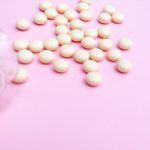Preventing and Removing SARS-CoV-19 From Water Supplies
Node Smith, ND
Scientists know that coronaviruses, including the SARS-CoV-19 virus responsible for the COVID-19 pandemic, can remain infectious for days — or even longer — in sewage and drinking water.
Scientists know that coronaviruses can remain infectious for days — or even longer — in sewage and drinking water
Two researchers, Haizhou Liu, an associate professor of chemical and environmental engineering at the University of California, Riverside; and Professor Vincenzo Naddeo, director of the Sanitary Environmental Engineering Division at the University of Salerno, have called for more testing to determine whether water treatment methods are effective in killing SARS-CoV-19 and coronaviruses in general.
Virus can be transported in microscopic water droplets or aerosols
The virus can be transported in microscopic water droplets, or aerosols, which enter the air through evaporation or spray, the researchers wrote in an editorial for Environmental Science: Water Research & Technology, a leading environmental journal of the Royal Society of Chemistry in the United Kingdom.
“The ongoing COVID-19 pandemic highlights the urgent need for a careful evaluation of the fate and control of this contagious virus in the environment,” Liu said. “Environmental engineers like us are well positioned to apply our expertise to address these needs with international collaborations to protect public health.”
Cluster of cases caused by a sewage leak during 2003 SARS outbreak in Hong Kong
During a 2003 SARS outbreak in Hong Kong, a sewage leak caused a cluster of cases through aerosolization. Though no known cases of COVID-19 have been caused by sewage leaks, the novel coronavirus is closely related to the one that causes SARS, and infection via this route could be possible.
Novel coronavirus could also colonize biofilms that line drinking water systems
The novel coronavirus could also colonize biofilms that line drinking water systems, making showerheads a possible source of aerosolized transmission. This transmission pathway is thought to be a major source of exposure to the bacteria that causes Legionnaire’s disease, for example.
Most water treatment routines believed to kill or remove coronaviruses effectively in both drinking and wastewater
Fortunately, most water treatment routines are thought to kill or remove coronaviruses effectively in both drinking and wastewater. Oxidation with hypochlorous acid or peracetic acid, and inactivation by ultraviolet irradiation, as well as chlorine, are thought to kill coronaviruses. In wastewater treatment plants that use membrane bioreactors, the synergistic effects of beneficial microorganisms and the physical separation of suspended solids filter out viruses concentrated in the sewage sludge.
Caution: most of these methods have not been studied for effectiveness specifically on SARS-CoV-19
Liu and Naddeo caution, however, that most of these methods have not been studied for effectiveness specifically on SARS-CoV-19 and other coronaviruses, and they have called for additional research.
Upgrading existing water and wastewater treatment infrastructure in outbreak hot spots is suggested
They also suggest upgrading existing water and wastewater treatment infrastructure in outbreak hot spots, which possibly receive coronavirus from places such as hospitals, community clinics, and nursing homes. For example, energy-efficient, light-emitting, diode-based, ultraviolet point-of-use systems could disinfect water before it enters the public treatment system.
Potable water-reuse systems, which purify wastewater back into tap water, also need thorough investigation for coronavirus removal, and possibly new regulatory standards for disinfection, the researchers wrote.
Extent to which viruses can colonize biofilms is unkown
The extent to which viruses can colonize biofilms is also not yet known. Biofilms are thin, slimy bacterial growths that line the pipes of many aging drinking water systems. Better monitoring of coronaviruses in biofilms might be necessary to prevent outbreaks.
The surge in household use of bactericides, virucides and disinfectants will probably cause an increase of antibiotic-resistant bacteria in the environment. Treated wastewater discharged into natural waterways demands careful monitoring through the entire water cycle. Liu and Naddeo call on chemists, environmental engineers, microbiologists, and public health specialists to develop multidisciplinary and practical solutions for safe drinking water and healthy aquatic environments.
Developing countries and some regions within highly developed nations, such as rural and impoverished communities, which lack basic infrastructure to remove other contaminants might be unable to remove SARS-CoV-19 either
Lastly, developing countries and some regions within highly developed nations, such as rural and impoverished communities, which lack the basic infrastructure to remove other common contaminants might not be able to remove SARS-CoV-19 either. These places might experience frequent COVID-19 outbreaks that spread easily through globalized trade and travel. Liu and Naddeo suggest governments of developed countries must support and finance water and sanitation systems wherever they are needed.
“It is now clear to all that globalization also introduces new health risks. Where water and sanitation systems are not adequate, the risk of finding novel viruses is very high,” Naddeo said. “In a responsible and ideal scenario, the governments of developed countries must support and finance water and sanitation systems in developing countries, in order to also protect the citizens of their own countries.”
1. Vincenzo Naddeo, Haizhou Liu. Editorial Perspectives: 2019 novel coronavirus (SARS-CoV-2): what is its fate in urban water cycle and how can the water research community respond? Environmental Science: Water Research & Technology, 2020; DOI: 10.1039/d0ew90015j

Node Smith, ND, is a naturopathic physician in Humboldt, Saskatchewan and associate editor and continuing education director for NDNR. His mission is serving relationships that support the process of transformation, and that ultimately lead to healthier people, businesses and communities. His primary therapeutic tools include counselling, homeopathy, diet and the use of cold water combined with exercise. Node considers health to be a reflection of the relationships a person or a business has with themselves, with God and with those around them. In order to cure disease and to heal, these relationships must be specifically considered. Node has worked intimately with many groups and organizations within the naturopathic profession, and helped found the non-profit, Association for Naturopathic Revitalization (ANR), which works to promote and facilitate experiential education in vitalism.









